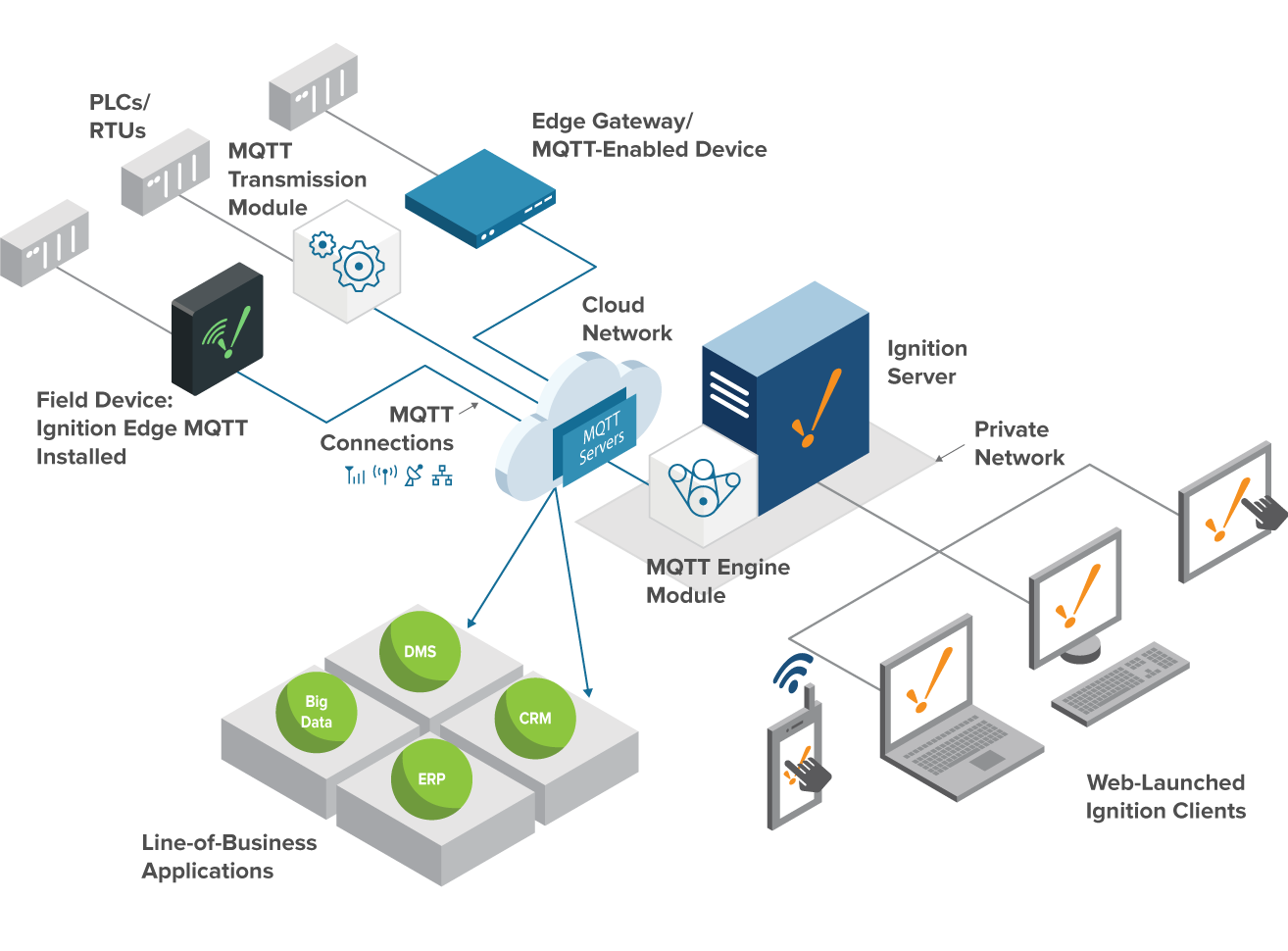IIoT Architecture
Overview
Ignition IIoT can collect data from any devices at the edge of the network, publish that data to a central broker, and push that data to subscribed industrial and line-of-business applications. Ignition IIoT can connect to PLCs in the field through the use of the MQTT Transmission module, field devices with Ignition Edge MQTT installed, and/or MQTT-enabled Edge Gateways and field devices that use the Cirrus Link Sparkplug MQTT specification. This data is published to an MQTT broker; the broker can be located on-premise, in the cloud, or a hybrid of the two. The MQTT Engine module located on an Ignition Gateway can subscribe to any data published from the broker. This data can be used in any Ignition application.
IIoT Architecture Example
IIoT Architecture typically involves the use of the MQTT protocol to communicate with a large number of devices. MQTT is a lightweight and secure protocol that makes use of a unique publish/subscribe transportation method. Additional information on the MQTT protocol and modules can be found in the Cirrus Link documentation.
The Standard Architecture can easily be expanded with the MQTT modules to collect data from numerous Edge of Network devices. Data collected by the MQTT Engine can be historized and presented in a client with the Vision module, or via reports with the Reporting module.

Gateway Network vs IIoT Architecture
The Gateway Network can be utilized to collect Tags at remote sites and share them with a central Ignition Gateway. However, in some cases, it is preferable to use the IIoT Architecture instead. Below are a couple reasons why.
Lightweight Protocol
IIoT uses the MQTT protocol, which is incredibly lightweight and efficient, making it ideal in scenarios when connections to a remote PLC are achieved via satellite or cellular communication. Additionally, it can safely support a large number of devices without placing a large strain on the network.
Simple Scalability
Adding new nodes to IIoT Architecture is simple and cost efficient. New Edge Gateways or MQTT-enabled devices can be deployed with minimal effort, while keeping costs low.
Absolutely not! The two protocols will continue to coexist, as they currently do. MQTT is a great light-weight protocol that is ideal for communicating with devices when available bandwidth is limited. If your Gateway is attempting to communicate with a PLC over a cellular or satellite connection, then an MQTT solution may be a better fit than OPC-UA.
IIoT Architecture Objects
The following are key pieces in the IIoT Architecture.
Field Device
A Field Device of some sort can be used to connect to a PLC. This device also needs to be able to publish Tag values to an MQTT server. Any of the following hardware can act as a Field Device:
- Ignition Edge with the MQTT plugin
- Ignition server with the MQTT Transmitter Module
- Third-party MQTT enabled device
MQTT Server (Broker)
An MQTT Broker is a server that can communicate with your Field Devices via MQTT. This can be an Ignition Gateway with the MQTT Distributor Module installed, or a third-party server, such as a Chariot MQTT Server.
Subscriber
A subscriber is some application that subscribes to topics in the Broker. In regards to Ignition, this is the Gateway with the MQTT Engine Module installed. More details on the MQTT modules can be found in the Cirrus Link documentation.

